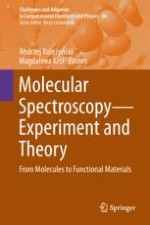This book reviews various aspects of molecular spectroscopy and its application in materials science, chemistry, physics, medicine, the arts and the earth sciences. Written by an international group of recognized experts, it examines how complementary applications of diverse spectroscopic methods can be used to study the structure and properties of different materials. The chapters cover the whole spectrum of topics related to theoretical and computational methods, as well as the practical application of spectroscopic techniques to study the structure and dynamics of molecular systems, solid-state crystalline and amorphous materials, surfaces and interfaces, and biological systems. As such, the book offers an invaluable resource for all researchers and postgraduate students interested in the latest developments in the theory, experimentation, measurement and application of various advanced spectroscopic methods for the study of materials.
